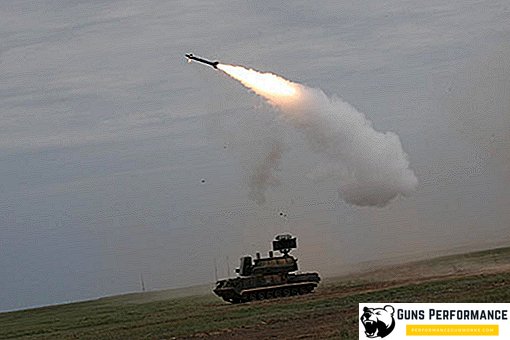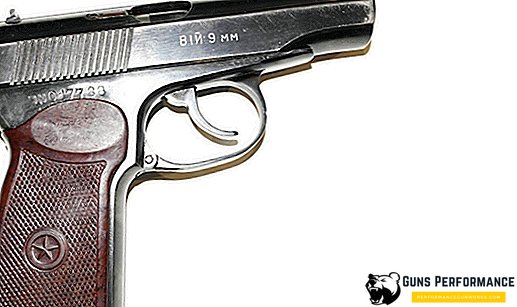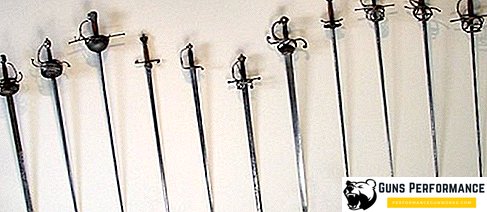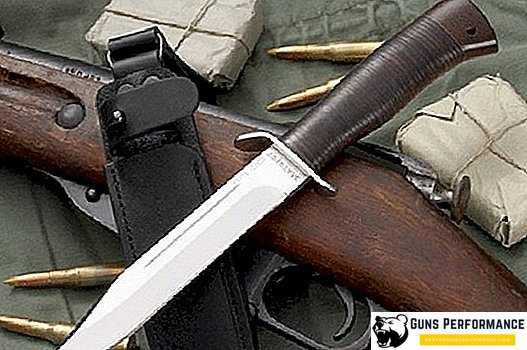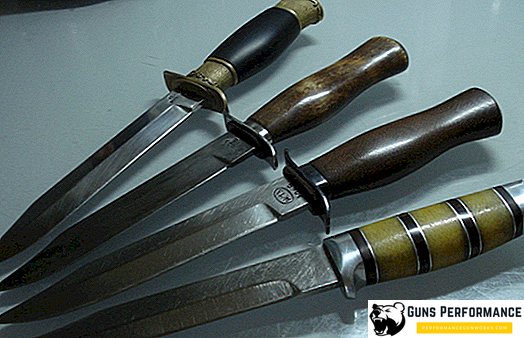
The concept of "scout knife" appeared only during the Second World War. Prior to that, the Russian soldier had no statutory knife at all. Of course, the soldiers had pocket knives, but they were not at all and did not differ in quality. The role of a knife in the army was executed by a bayonet, which was suitable only for stabbing wounds, but was of little use for economic purposes.
In general, the knife has been associated with gangsters since the times of the tsarist army; in Soviet times, this was documented, forbidding the carrying and possession of any knives except kitchen ones. The legend is still extremely widespread that any knife with a blade length wider than a palm is a cold weapon and is forbidden to wear.
The story of the appearance of the knife scout NR-40

In the USSR in the 30s of the 20th century it was forbidden to carry, store and make Finnish-type knives. For the soldiers of the Red Army, this law was no exception either. By the beginning of the Finnish war of 1939-1940, the soldiers had only triangular rifle bayonets. The Finnish war, which was fought in the forests, showed the need for a soldier with a knife that could perform combat and economic functions. The Finnish army clearly demonstrated how the knife helps the scouts to "shoot" the sentries.
In addition, in those years there was a rearmament of soldiers from rifles to Shpagin submachine guns, which were deprived of the bayonet. As a result, Soviet machine gunners were left without a bayonet and without a knife.
After analyzing the critical situation, the command gave the order for the development of a scout knife, which entered service in 1940, having received the name of a scout knife HP 40 (initially it was called AT 40 or a machine gun knife).
The prototype for this knife served as the Finnish knife puukko, although the knife of the scout HP is very different from the classic "finca". It is possible that the gangster Finn, which was a free variation on the Finnish knife, served as a prototype for a scout's knife, because the original is completely devoid of a protective guard and has a “fungus” at the end of the handle.
The dimensions of the blade HP-40 was 152 millimeters, with a thickness of 2.6 mm and a width of 22 mm. There was a protective guard, thanks to which the knife was more focused on the use of the reverse grip, which is more effective for neutralizing the enemy. Initially scouts were supplied with such knives, because of which the knife got its name.
Knife scout HP-40 went through all the years of the war and is not forgotten even now. Many companies produce many models of HP-40, among them you can even meet the knife scout of Damascus steel.
The appearance and modification of the HP-40

The manufacture of special combat knives in a short time was mastered at the Trud plant in Nizhny Novgorod, as well as at the ZIK plant in Zlatoust. The Trud factory produced a special series of knives for NKVD officers.
During the war years, only at the Zlatoust enterprise, more than 260 thousand units of a scout's knife were produced, which gained popularity as the authorized knife of the army of the USSR and the countries of the socialist camp.
Craft production of the legendary knife
Due to the fact that production could not cope with the release of a sufficient number of knives, many working artels made their own versions of a scout knife. They differed extremely low quality metal blade, which is easily bent and did not hold at all sharpening. But the handles of these knives were often much more attractive than the factory models. Many soldiers easily solved the problem of the attractiveness of a knife, changing the factory factory handles to self-made wooden ones, or moving the handles from homemade, low-quality samples to the factory blade.
Knife scout 43rd year

In 1943, an improved version of the scout knife HP-40, model HP-43, was given the nickname "Cherry" because of the stigma similar to this berry. The knife received a through shank, a handle of a different shape and from another material and a new guard. It is believed that the development of this model played a big role German SS daggers, having a similar shape of the handle.
Knife combat methods used in reconnaissance
Do not believe various sources, which argue that the scouts were unsurpassed masters of knife fighting. In reconnaissance, the knife could only be used for a surprise attack and killing a gaping enemy, so the scouts were trained only with two knife grips and a few standard strikes.
- Normal straight grip, when the hand tightly squeezes the handle, holding the knife blade up. From this position it was possible to deliver powerful blows to the stomach or under the ribs to the enemy. The disadvantages of this grip were excessive constraint of the arm with a knife and lack of speed;
- Reverse grip is most often used by scouts. Striking down from top to bottom, the scout clapped his mouth to the enemy with his second hand so that he would not have time to raise the alarm.
Household and household functions of a scout knife
The creators of the HP-40 were tasked with creating a combat knife that could be used for domestic purposes. Knife scout with these tasks coped perfectly. Despite the small weight of the blade, they could cut branches for the camp or stretcher, open a can of canned food and cut bread and sausage. Of course, the protective guard serves as an obstacle in the performance of economic work, but do not forget that the main task of this knife is combat use.
Knife scout shooting or NRS-2

In 1986, the USSR Army adopted a special knife, the LDC-2, designed for special forces. Its feature was the fact that the LDC-2, in addition to performing the functions of a knife, was also designed for silent shooting at a distance of up to 25 meters. This knife is quite rare and is not intended to be sold to civilians. The shooting device for the LDC-2 single-shot.
In addition to the shooting function, the NRS-2 knife is equipped with pliers for working with detonators, a screwdriver and a saw on the butt of a knife. The firing element is a barrel located in the hollow handle of the knife. This device requires long recharging with the extraction of the barrel from the handle, therefore, is intended for use in extreme cases. NRS-2 is an ideal knife for intelligence officers and saboteurs.

Modern scout knife replicas
Due to the high popularity of the scout knife, modern knife companies produce many models based on it. Products of the AIR, Kizlyar, and Saro factories are considered the highest quality. In addition, there are many private owners who are engaged in the manufacture of unique knife replicas from any steel you need.
If a scout knife attracts you with its history and predatory species, get one for yourself, it will not let you down in any situation.



